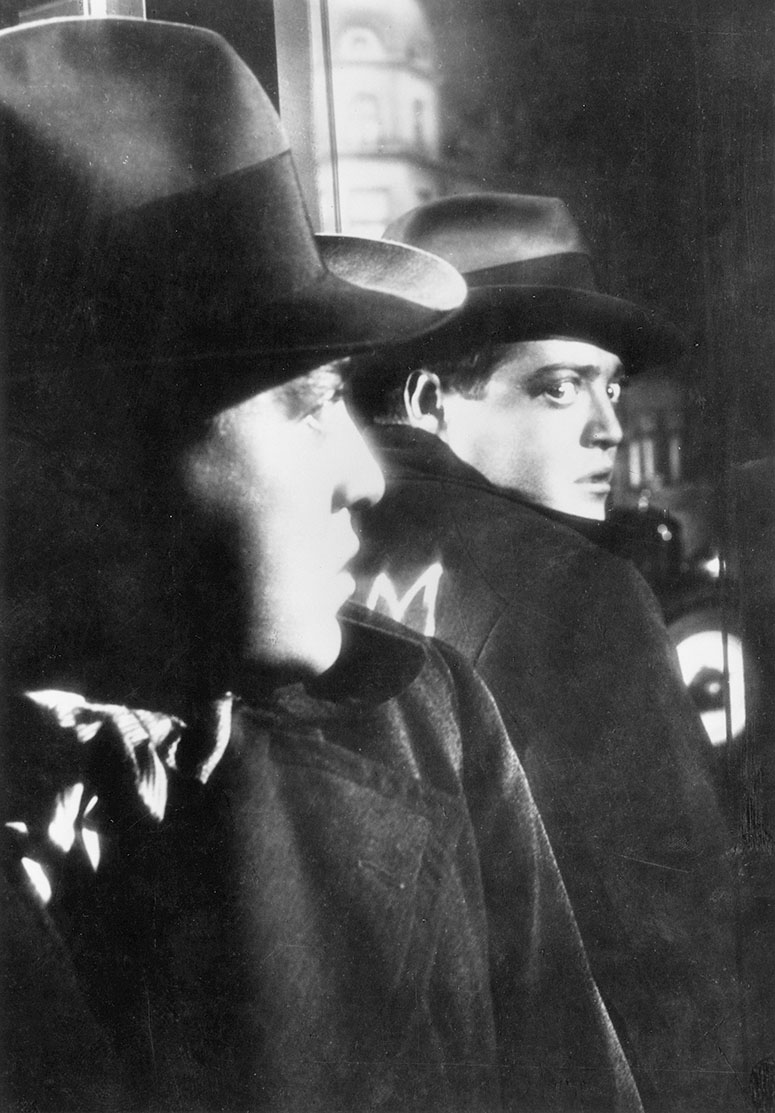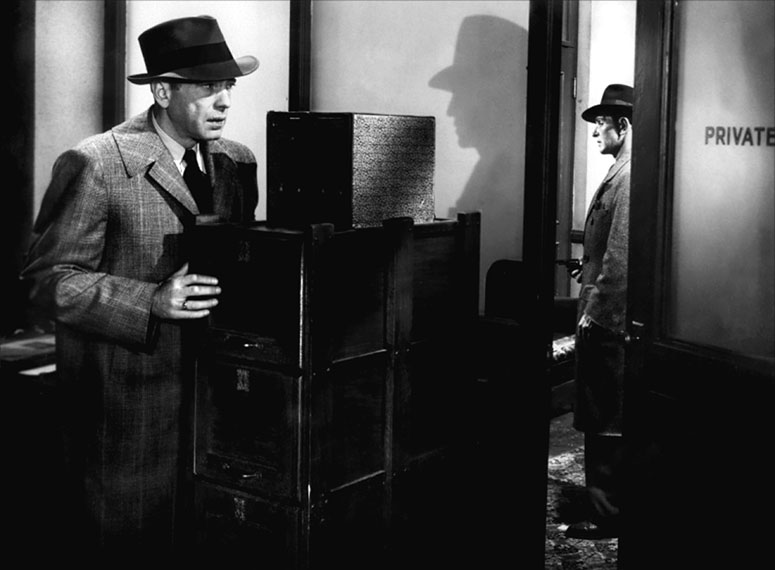Cynical and seductive, film noir was born in the ashes of the Great Depression and fuelled by disillusionment and the paranoia of the postwar era. In March-April, the Australian Cinémathèque presents a curated program exploring the classics as well as their modern counterparts.
 Production still from Double Indemnity 1944 / Director: Billy Wilder / Image courtesy: Universal Pictures– see this seminal classic screening on 1 & 5 April & 21 May
Production still from Double Indemnity 1944 / Director: Billy Wilder / Image courtesy: Universal Pictures– see this seminal classic screening on 1 & 5 April & 21 May
‘How could I have known that murder could sometimes smell like honeysuckle?’ [Walter Neff (Fred MacMurray) musing about the woman (Barbara Stanwyck) who led him astray in Double Indemnity 1944.]
DOUBLE INDEMNITY 1944 PG
Walter Neff is a tough-talking insurance salesman who falls in love with the unhappily married Phyllis Dietrichson. Together they plot the perfect crime: the ‘accidental’ death of Phyllis’s tycoon husband so they can cash in on his hefty life insurance. The only person standing in their way is Neff’s boss Barton Keyes, who smells a rat! Billy Wilders Double Indemnity is the quintessential film noir. The screenplay, inspired by the real life murderess Lorraine Snyder, was written by Wilder alongside detective writer Raymond Chandler and is equal parts hardboiled and tawdry. Told through a mosaic of flashback narratives, it takes place in a lonely Los Angeles, framed by sharp shadows and a mood of deep cynicism.
See this seminal classic screening on Saturday 1 & Wednesday 5 April plus Sunday 21 May 2017
Film noir is one of the most visually seductive and enduring cinematic styles, conjuring evocative images of hard-eyed femme fatales lounging in smoky dive bars, and the down-on-his-luck private eye chasing petty criminals through murky alleyways. Sexy, smart and sinister, film noir rose to prominence in the 1940s and 50s, offering the viewing public escapism from the communal anxieties, paranoia, and feelings of alienation that had begun to build in the 1920s with the Depression. Further influenced by the disillusionment of those fleeing the rise of Nazism in Europe, World War Two, and the threat of nuclear weapons during the Cold War, these films resonated with the prevailing social discontent of the era.
As stylish as it was cynical, film noir married the aesthetic of German expressionist cinema — which employed unusual camera angles and explored the ways that light, shadow and contrast could strategically enhance the narrative — with Hollywood’s highly romanticised Depression-era crime films, to create an identifiably North American cinematic style. With its realistic settings and penchant for low, dramatic lighting, film noir was a natural choice for many studios unable to fund the big-budget musicals and comedies also popular at the time — a decision further supported by the development of lighter and more portable cameras and associated equipment during World War Two, which made location shooting an affordable alternative.
 Production still from M – A Town is Looking for a Murderer 1931 / Director: Fritz Lang / Image courtesy:
Production still from M – A Town is Looking for a Murderer 1931 / Director: Fritz Lang / Image courtesy:
Praesens Film
The development of film noir, literally ‘black film or cinema’ as coined by French critics, was further enhanced by the paperback novels of this period. With their sharp, witty dialogue, edgy, venerable characters, and twisting plots of betrayal and greed, novelists Raymond Chandler, Dashiell Hammett and James M Cain encapsulated Hollywood’s fascination with their dark themes of moral ambiguity and corruption, and attracted the attention of accomplished directors, including exiled European filmmakers Fritz Lang, Robert Siodmak, Billy Wilder and Otto Preminger, alongside their North American counterparts John Huston, Orson Welles and Nicholas Ray.
 Production still from The Big Sleep 1946 / Director: Howard Hawks / Image courtesy: Roadshow Entertainment
Production still from The Big Sleep 1946 / Director: Howard Hawks / Image courtesy: Roadshow Entertainment
‘Film Noir’ considers a history of this distinctly North American sensibility. It brings together a selection of pre noir films from the 1920s and 30s, including beloved ‘American Gangster’ stories (such as Raoul Walsh’s The Roaring Twenties 1939 ) and influential German expressionist films (Fritz Lang’s M 1931), alongside film noir classics (Billy Wilder’s Double Indemnity 1944 and Howard Hawks’s The Big Sleep 1946). It also considers contemporary cinema with the themes and aesthetics of film noir (Martin Scorsese’s Taxi Driver 1976 and Nicolas Winding Refn’s Drive 2011) and its ongoing international influence (Ivan Sen’s Goldstone 2016).
 Production still from Taxi Driver 1976 / Director: Martin Scorsese / Image courtesy: Park Circus
Production still from Taxi Driver 1976 / Director: Martin Scorsese / Image courtesy: Park Circus
‘Film Noir’ is a ticketed program and screens at the Gallery’s Australian Cinématheque from 31 March to 21 May.
The Australian Cinémathèque also presents two silent masterpieces with live musical accompaniment as part of Live music and film: Film Noir. Joseph von Sternberg’s thrilling Underworld 1927 is a forceful prototype for the American gangster film genre. The film will feature accompaniment from David Bailey on the Gallery’s 1929 Wurlitzer organ while Brisbane post-rock instrumental group hazards of swimming naked will provide a new live score for F.W. Murnau’s beloved The Last Laugh 1924, an emotionally powerful treasure of Weimar cinema.
Copyright © 2008
This feed is for personal, non-commercial use only.
The use of this feed on other websites breaches copyright. If this content is not in your news reader, it makes the page you are viewing an infringement of the copyright. (Digital Fingerprint:
)